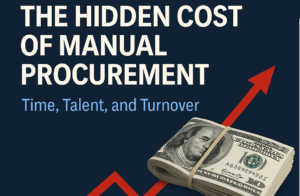Introduction
In today’s fast-paced global economy, supply chains must be agile, resilient, and adaptable. Change is not just inevitable—it is a necessity. Whether fueled by technological advancements, shifts in consumer demand, geopolitical events, or sustainability initiatives, transformational changes in supply chain management are essential for staying competitive. However, implementing these changes successfully requires robust change management strategies to ensure smooth transitions and long-term benefits.
This article explores the significance of change management in supply chain transformations, providing real-world examples, statistical insights, and best practices to help organizations navigate these critical transitions effectively.
The Essence of Supply Chain Change Management
Supply chain change management encompasses the strategic planning, execution, and communication of modifications to processes, systems, and structures within the supply chain ecosystem. It involves a structured approach to mitigating resistance, facilitating seamless adoption, and ensuring that organizations fully realize the intended benefits of transformation initiatives.
Change within the supply chain can be triggered by various factors, including technological advancements, regulatory updates, market shifts, geopolitical disruptions, and sustainability goals. For example, the push for greener supply chains has led companies like Unilever and Tesla to overhaul their logistics and sourcing strategies, incorporating electric fleets and sustainable sourcing practices. However, without an effective change management strategy, such initiatives risk falling short due to employee pushback, operational misalignment, or inadequate stakeholder engagement.
A report by McKinsey & Company indicates that 70% of large-scale transformation programs fail due to poor change management. This underscores the necessity of a well-structured change management strategy to achieve sustainable supply chain optimization and resilience.
Why Effective Change Management Matters
- Minimized Disruption
Change, if not managed properly, can disrupt production schedules, supplier relationships, and overall service levels, leading to costly inefficiencies. A prime example is Walmart’s implementation of blockchain technology to enhance food traceability. Rather than an abrupt shift, Walmart adopted a phased approach, initially collaborating with key suppliers to test the system before rolling it out across its entire supply chain. This strategy minimized disruptions and allowed stakeholders to adjust progressively.
Another example is Boeing’s adaptation to supply chain shifts during the COVID-19 pandemic. By implementing a change management framework that emphasized transparent communication with suppliers and internal teams, Boeing managed to mitigate production delays despite significant supply chain disruptions.
- Enhanced Adoption and Compliance
Employees and stakeholders are more likely to embrace change when they understand its purpose and feel involved in the process. According to a Harvard Business Review case study, companies that invest in structured change management programs see a 30% increase in project success rates compared to those that do not.
A notable example is DHL’s digital transformation initiative, which involved extensive employee training and pilot programs before company-wide implementation. By engaging employees early and addressing concerns through continuous feedback loops, DHL successfully integrated AI-driven warehouse management systems, improving operational efficiency without significant resistance.
- Optimized Performance
Transformational initiatives such as automation, artificial intelligence (AI), and predictive analytics can significantly enhance supply chain performance. However, realizing these benefits requires a well-defined change management approach.
A study by PwC found that AI-driven supply chain improvements can reduce logistics costs by up to 15%, yet many organizations struggle to capitalize on these benefits due to poor change adoption strategies. For instance, General Electric (GE) leveraged AI-powered predictive analytics to enhance inventory management. By involving supply chain managers early in the process and conducting hands-on training, GE ensured a smoother transition, leading to substantial cost savings and efficiency gains.
- Employee Engagement and Retention
Resistance to change is often rooted in fear of job displacement or uncertainty. Companies that proactively engage employees and provide reskilling opportunities foster a culture of collaboration and innovation.
Amazon exemplifies this approach with its ongoing investment in workforce training programs. The company launched a $700 million initiative to upskill employees in robotics and automation-related roles, ensuring that workers remained valuable assets even as supply chain automation expanded. This strategy not only improved retention rates but also enhanced overall productivity by equipping employees with the necessary skills to thrive in an evolving supply chain landscape.
Strategies for Successful Supply Chain Change Management
Effective change management in supply chains is crucial for ensuring smooth transitions, minimizing disruptions, and maximizing efficiency. Organizations that implement structured change strategies are more likely to achieve successful transformations. Here are key strategies, along with real-world examples and supporting data.
1. Clear Vision and Communication
Defining and articulating the purpose, benefits, and expected outcomes of a transformation is fundamental. Transparency helps alleviate uncertainties, aligns stakeholders, and builds trust across the organization. According to a McKinsey study, companies that clearly define their vision and communicate it effectively are 3.5 times more likely to outperform their peers during change initiatives.
When Unilever transitioned to a fully digital supply chain, leadership ensured that all stakeholders, from suppliers to employees, understood the long-term value and impact of the initiative. The company used town hall meetings, digital newsletters, and interactive Q&A sessions to foster alignment and reduce resistance.
2. Leadership Buy-In and Role Modeling
Executive sponsorship is a critical success factor for supply chain transformations. A Deloitte survey found that 83% of successful transformations had strong leadership involvement. Leaders must actively champion the change, provide direction, and set an example for employees.
General Electric (GE) successfully implemented lean manufacturing practices across its supply chain by engaging executives and frontline managers in extensive training and decision-making. The hands-on involvement of senior leadership reinforced the importance of lean principles and ensured widespread adoption.
3. Stakeholder Involvement
Engaging employees, suppliers, and customers in the change process fosters a sense of ownership, enhances cooperation, and reduces resistance. Studies show that organizations that involve stakeholders early in the process are 2.5 times more likely to achieve successful change outcomes.
Nike involved suppliers in its sustainability-driven supply chain transformation by co-developing new production methods that reduced carbon emissions. By including key stakeholders in the decision-making process, Nike improved supplier collaboration and accelerated its sustainability goals.
4. Education and Training
A lack of proper training is one of the main reasons supply chain transformations fail. Companies that invest in skill development are 4.6 times more likely to see successful adoption of new technologies and processes.
FedEx introduced AI-driven route optimization technology to enhance delivery efficiency. To ensure smooth adoption, the company invested heavily in employee training programs, including hands-on workshops and e-learning modules tailored to different job roles.
5. Phased Implementation
Implementing changes in phases allows organizations to manage risks, address issues incrementally, and prevent employees from feeling overwhelmed. Phased rollouts also provide opportunities for real-time adjustments.
Coca-Cola phased out plastic rings in its beverage packaging over five years, giving suppliers, manufacturers, and retailers sufficient time to adapt. This approach minimized disruption while supporting the company’s sustainability agenda.
6. Support and Resources
Providing employees with access to ongoing support—such as mentorship programs, help desks, and digital tools—ensures a smoother transition and higher adoption rates. According to PwC, 65% of employees resist change due to inadequate support structures.
SAP offered real-time chat support and on-demand training during its cloud-based ERP system rollout. These resources helped employees troubleshoot issues quickly and improved system adoption rates across global teams.
7. Feedback Mechanisms
Continuous feedback loops help organizations identify bottlenecks, address concerns, and refine their approach. Companies that actively seek employee and customer feedback are 1.7 times more likely to achieve successful change implementation.
DHL employs AI-driven sentiment analysis to assess employee and customer feedback on operational changes. This enables the company to make data-driven decisions and adjust strategies in real time, ensuring a more responsive supply chain transformation.
8. Celebrating Milestones
Recognizing and rewarding achievements boosts morale and sustains momentum. Celebrations can range from internal recognition programs to public acknowledgment of key contributors.
Intel publicly acknowledges teams that enhance supply chain efficiency by featuring them in internal newsletters and awarding performance-based incentives. This approach encourages continuous innovation and collaboration among employees.
9. Continuous Improvement
Supply chain transformation is not a one-time event but an ongoing process. Organizations that foster a culture of continuous improvement maintain a competitive edge and drive sustained efficiency gains.
Toyota’s Kaizen methodology emphasizes continuous improvement in supply chain operations. By encouraging employees at all levels to contribute innovative ideas, Toyota consistently enhances productivity, reduces waste, and improves operational efficiency.
Conclusion
Transformational initiatives drive supply chain evolution, ensuring organizations remain agile and competitive in an ever-changing market. However, success hinges on effective change management. By fostering a culture of communication, collaboration, and adaptability, leaders can navigate challenges, minimize disruptions, and unlock the full potential of their supply chain transformations.
The Perfect Planner Team is here if you have any questions about Supply Chain Change Management for Transformational Initiatives. We offer a free consultation service. Connect with us on LinkedIn, email us at info@perfectplanner.io, visit our website at www.perfectplanner.io, or call us at 423.458.2979.
Author: Ed Danielov
Publication Date: March 27, 2025
© Copyright 2025 Perfect Planner LLC. All rights reserved.
References
-
McKinsey & Company. (2023). “The State of Supply Chain Transformation.” – https://www.mckinsey.com/capabilities/operations/our-insights/supply-chain-risk-survey
-
Harvard Business Review. (2022). “Why Change Management is Crucial in Supply Chains.” – https://hbr.org/2022/07/digital-transformation-is-changing-supply-chain-relationships
-
PwC. (2021). “AI in Logistics: The Future of Smart Supply Chains.” – https://www2.deloitte.com/us/en/pages/operations/articles/ai-in-modern-supply-chain-management.html
-
Deloitte. (2022). “Executive Sponsorship and Transformation Success.” – https://www2.deloitte.com/content/dam/insights/articles/us187540_tech-trends-2025/DI_Tech-trends-2025.pdf
-
Gartner. (2023). “Supply Chain Trends and Future Predictions.” – https://www.gartner.com/en/supply-chain/topics/supply-chain-ai






